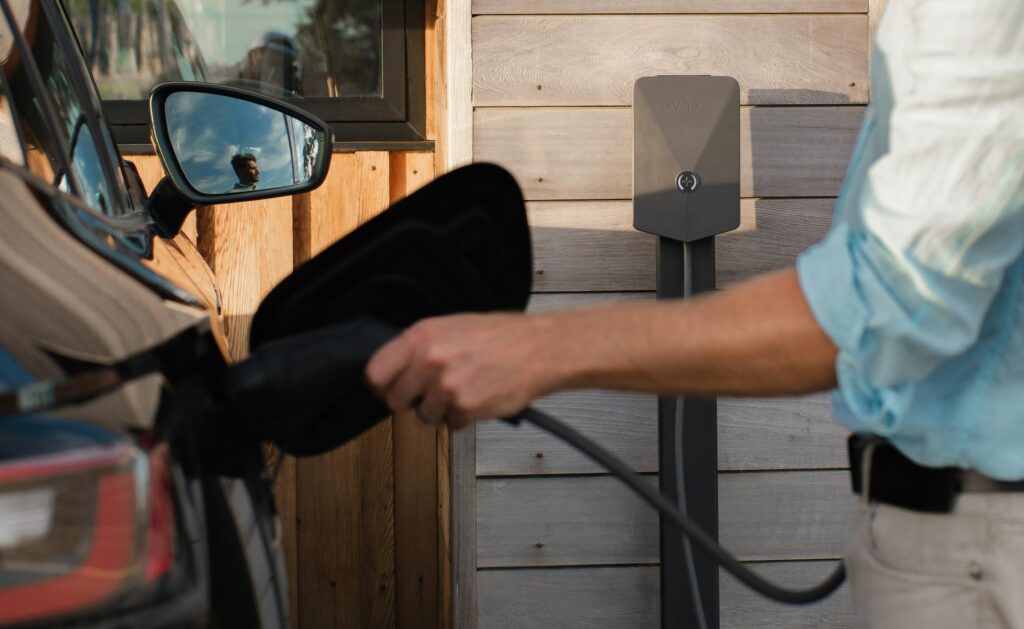There’s a lot of misinformation about electric vehicles (EVs) these days. While switching to electric mobility is a crucial step toward a more sustainable future, persistent myths can make the transition seem more intimidating than it actually is. Concerns about battery fires, resale values, or waiting for a “better alternative” often prevent people from taking that step.
Let’s be honest—a significant amount of this noise comes from vested interests. Big corporations and individuals with a lot to lose from the shift to clean energy frequently spread misinformation to protect their financial interests.
And that’s why at ivygo we strongly believe that it is essential to rely on reputable sources and trusted organisations to get the full story.
Yes, switching to an EV requires some adjustments. My own journey had its challenges too (spoiler: that’s what inspired ivygo!). But when you weigh those small changes against the long-term benefits for your wallet, your health and the planet, the choice becomes clear.
If you have questions or doubts about EVs, let’s chat! But for now, let’s tackle some of the most common EV myths and separate fact from fiction.
Myth 1: EV batteries catch fire easily, especially in accidents
Fact: EVs are less likely to catch fire than petrol or diesel vehicles.
Worldwide studies show EVs have a far lower risk of catching fire than internal combustion engine vehicles (ICE). Research by AutoInsuranceEZ found that EVs have only 25 fires per 100,000 vehicles, compared to 1,530 for petrol vehicles and 3,475 for hybrids. EV manufacturers design batteries with thermal management systems to prevent overheating, and vehicles are rigorously tested to meet safety standards. In Australia, the Australian Automotive Safety Authority (AASA) confirms that the risk of fire in EVs is very low compared to conventional vehicles.
Source: AutoInsuranceEZ
Myth 2: You can get electrocuted when plugging your car to charge, or EV chargers can catch fire easily
Fact: EV chargers are safe when installed by a certified installer and maintained properly.
Most fires related to EV chargers occur due to outdated home wiring or improper installations. In Australia, compliance with standards like AS/NZS 3000 ensures chargers are safe. Professional installation and regular maintenance minimise risks. The Australian Energy Regulator (AER) oversees safety standards and guidelines for electrical installations, helping ensure that EV charging infrastructure is safe for consumers.
Source: Australian Energy Regulator – Electricity Safety
Myth 3: EV batteries only last for a few years
Fact: EV batteries are designed to last much longer.
Most EV manufacturers offer battery warranties of 8–10 years or 160,000 km, with a guarantee that the battery will retain at least 70% of its original capacity.
In reality, EVs are performing better than expected. Real-world data shows that many retain over 90% capacity after several years. For example, the Tesla Model S maintains around 90% capacity after 200,000 km.
A 2020 study by Geotab found that EV batteries could last up to 20 years, well beyond most vehicle lifespans — and even after that, they can be repurposed for home or grid energy storage.
On a personal note: I have had my MG for 2 years now and the range has actually gone up — which I like to think says something about my great driving skills!
Source: Geotab on EV Battery Longevity
Myth 4: EVs are not the best choice, so it is better to wait for a better solution
Fact: EVs offer immediate benefits, and technology is improving rapidly.
Charging an EV is significantly cheaper than filling up with petrol — and the environmental impact is far lower. Even when powered by Australia’s current electricity grid, EVs produce up to 50% fewer emissions than petrol vehicles. That gap will only grow as more renewables power the grid, and as manufacturers improve the recyclability of EV components and batteries, further reducing their environmental footprint.
Delaying adoption means missing out on lower running costs, government incentives, and meaningful climate benefits. According to the Australian Energy Market Operator (AEMO), EVs will play a critical role in Australia’s transition to a cleaner energy future, helping to reduce overall emissions and support a more sustainable transport system.
Source: AEMO – Future of EVs in Australia
Myth 5: EVs are too expensive for most people
Fact: EVs are becoming more affordable, and total ownership costs are lower.
The price of EVs in Australia is decreasing, with models like the MG ZS EV and the BYD Dolphin Essential now priced at around $30,000. Lower running costs—such as no servicing and cheaper fuel help offset the initial expense. A recent report from the Australian Renewable Energy Agency (ARENA) found that as EVs become more mainstream, their total cost of ownership is on par with or cheaper than petrol vehicles over a 5–10 year period.
Source: ARENA EV Cost of Ownership Report
Myth 6: EVs are not suitable for long-distance travel
Fact: EV ranges and charging infrastructure are improving.
Modern EVs can travel 400–600 km on a single charge, and Australia’s charging network is expanding quickly. Government initiatives, such as the Future Fuels Strategy, aim to improve access to fast chargers, making long journeys more convenient. According to the Electric Vehicle Council (EVC), Australia’s network of fast chargers is growing steadily, reducing any concerns about range anxiety.
At the same time, community-powered solutions like ivygo are emerging to support the transition, by leveraging underutilised private chargers in homes and businesses. These peer-to-peer networks help fill infrastructure gaps and make EV charging more accessible, especially in areas where public chargers are still limited.
And let’s be honest – how often are you really driving 1,000 km in one go? If you are buying a car, think about your daily commute first, not the rare occasion you decide to road-trip across the country.
Source: Electric Vehicle Council – Charging Infrastructure
Myth 7: EVs are not environmentally friendly because of battery production
Fact: EVs produce significantly fewer emissions over their lifetime than petrol vehicles.
A study by the International Council on Clean Transportation (ICCT) shows that EVs in Australia emit 50–60% less CO₂ over their lifetime, even accounting for battery production. CO2 produced during the battery manufacturing process is offset after approximately 20,000 km of driving. Moreover, improvements in recycling processes, like those in the Australian National Battery Recycling Scheme, continue to reduce the environmental impact of EV batteries.
Source: ICCT Study on EVs
Myth 8: EVs have poor second-hand resale value
Fact: Resale values for EVs are strong and improving.
Demand for second-hand EVs is rising in Australia. Vehicles like the Tesla Model 3 and Hyundai Kona Electric retain 70–80% of their value after three years, which is often better than petrol cars. The Australian second-hand car market is increasingly recognising the value of EVs, and as the market grows, resale values are expected to stabilise and improve.
Source: EV Resale Value Trends – EV Council
Myth 9: EV insurance costs are too high
Fact: EV insurance costs are competitive and decreasing.
While some insurers initially charged higher premiums for EVs due to specialised repairs, the growing EV market is driving down costs. In fact, many insurers now offer discounts for EV owners, recognising the lower maintenance costs. A report by the Insurance Council of Australia (ICA) indicates that premiums for EVs are becoming more competitive, and drivers benefit from lower maintenance and running costs, reducing overall ownership expenses.
Source: Insurance Council of Australia – EV Insurance
Myth 10: EV chargers will overload the power grid
Fact: Grids are adapting to meet EV demand.
Australian energy providers are introducing smart charging solutions to balance grid load. Vehicle-to-grid (V2G) technology also allows EVs to supply energy back to the grid, enhancing stability during peak times. According to the Australian Energy Market Operator (AEMO), the adoption of V2G technology is expected to help maintain grid stability and provide additional benefits to both EV owners and the wider energy network. Moreover, Australia’s significant solar energy capacity—more than 3 million rooftop solar systems—makes EVs a natural fit for clean energy integration.



